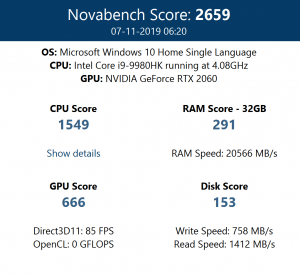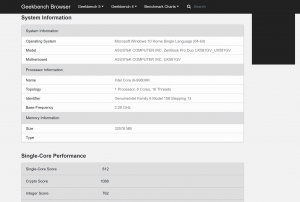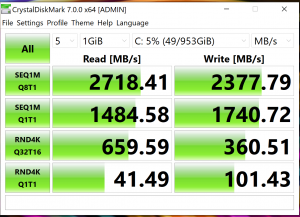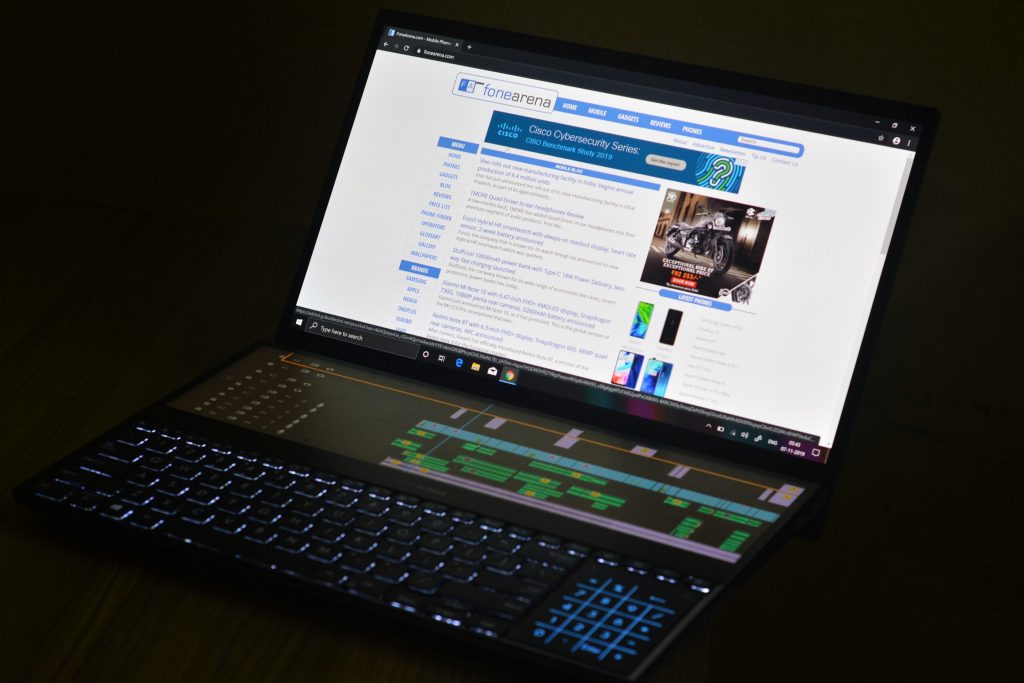
Laptop manufacturers have come a long way in terms of innovation and are experimenting with new technologies on their products. We saw brands coming up with almost bezel-less displays on laptops, triple-display laptop Project Valerie from Razer, MateBook X with a pop-up camera, and more. The latest to join the list is ASUS with its innovative dual-screen laptop, ZenBook Pro Duo (UX581). As the name suggests, it comes with a 14″ secondary OLED 4K screen. We have been testing the top-end variant of ZenBook Pro Duo with Intel Core i9 processor, 32GB RAM, 1TB storage for some time now and here is our review of ASUS ZenBook Pro Duo (UX581).
ASUS ZenBook Pro Duo (UX581) specifications
- 15.6-inch 16:9 4K OLED touchscreen display with a resolution of 3840 x 2160 pixels, 5mm-thin bezel, 89% screen-to-body ratio, and 178° wide-view technology
- 9th Generation Intel Core i9-9980HK processor with 2.4GHz base clock speed and Turbo Boost up to 5.0GHz; 16MB cache
- NVIDIA GeForce RTX 2060 GPU
- 32GB DDR4 2666MHz RAM
- 1TB PCIe Gen 3 x4 SSD
- Full size backlit keyboard, 14-inch 4K ScreenPad Plus touch display with 178˚ wide-view technology, NumberPad -Integrated LED-backlit numeric keypad on the touchpad
- Connectivity and ports: Up to Intel Wi-Fi 6 (802.11ax), Bluetooth 5.0, 1 x Thunderbolt 3 USB Type-C with Display Port, 2 x USB 3.1 Gen 2 Type-A , 1 x HDMI 2.0, 1 x Audio combo jack, 1 x DC-in
- IR HD camera
- ASUSSonicMaster stereo audio system, Cortana and Alexa voice-recognition support
- Dimensions: 2.4 x 35.9 x 24.6 cm(Height x Width x Depth) ; Weight: 2.5kg
- 71Wh 8-cell battery; Up to 7.5 hours battery life
- Windows 10 Pro
Unboxing and Box Contents
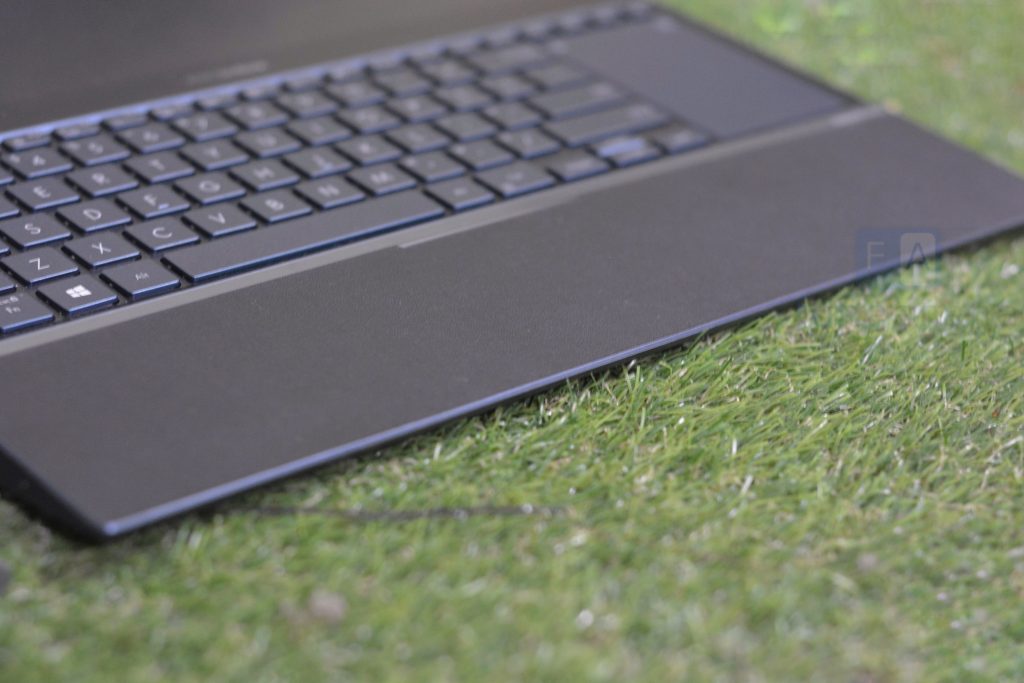
The unboxing experience was unique as upon opening up the box, it elevates to a certain angle just like the laptop’s hinge mechanism and it was quite different from the usual unboxings. Inside the box, you will find the ZenBook Pro Duo itself followed by the power adapter enclosed in another box, an ASUS Pen, and a dedicated discrete palm rest along with the usual paperwork.
Design and Build Quality
ASUS ZenBook Pro Duo sports dual 4K displays with minimal bezels providing an immersive experience. The overall design is quite different from the usual laptops and to the front, you will find a 15.6-inch 4K OLED display along with an IR webcam with Windows Hello support. It is followed by the secondary display i.e., 14-inch ScreenPad Plus with 4K resolution and full-size backlit keyboard. To the right of the keyboard, you will find the TouchPad that also houses an integrated LED-backlit numeric keypad.
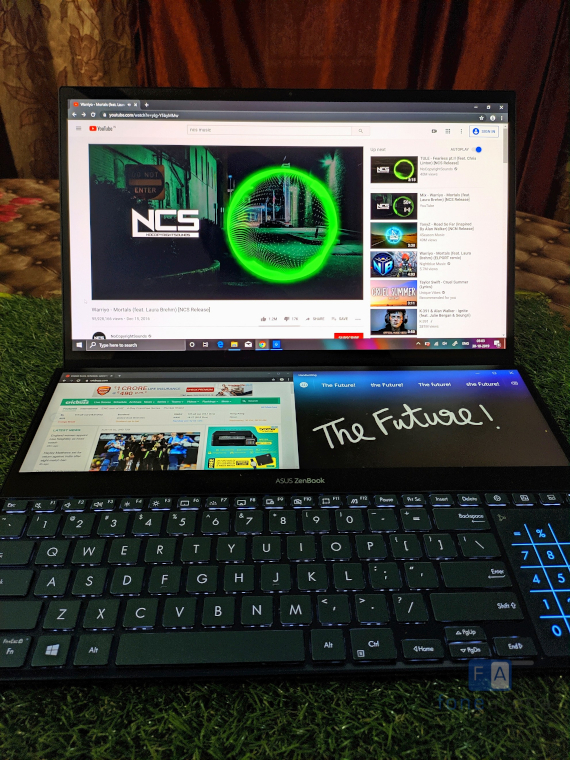
To the left, you will find the DC-in, HDMI port, USB 3.1 Gen 2 port, cooling vents, and to the right, you will find another USB 3.1 Gen 2 port, 3.5mm headphone jack combo, Thunderbolt 3 USB Type-C port, and cooling vents. There are sharp edges which are made of metal and gives a premium feel to the laptop.
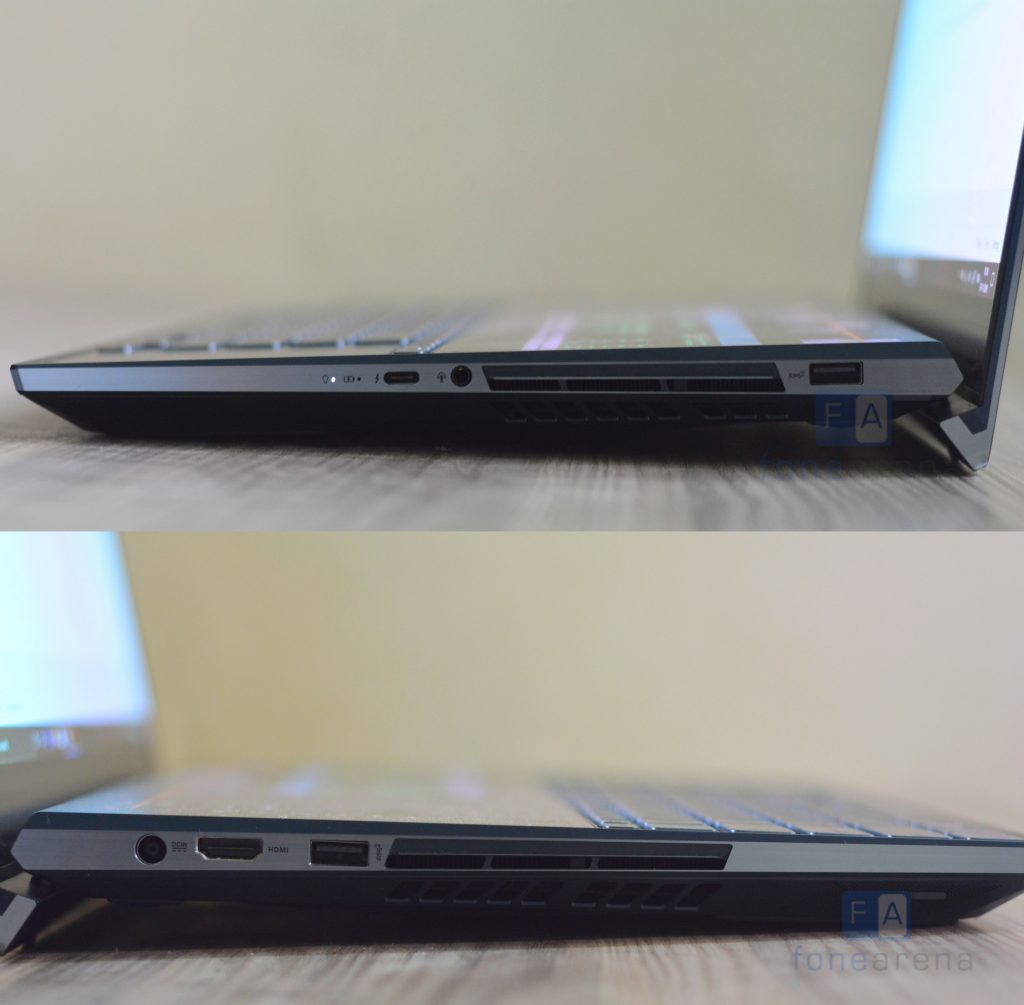
This laptop weighs 2.51kg and has quite a heft to it. But, the build quality is sturdy with a premium finish. It is well built with premium materials and you will notice the same once you start using it. Overall, the build quality is good.
Display(s)
The primary display on this laptop is a 15.6-inch 4K OLED touchscreen panel with a resolution of 3840 x 2160 pixels and has an 86% screen-to-body ratio. The quality of the panel is great with vivid colors, great sharpness, detail, gets pretty bright, and has good outdoor visibility in direct sunlight. However, the touch functionality was not quite up to the mark and it has was kind of hit or miss. It worked for the most part, but sometimes it did touch did not register properly, and we had to resort to using the touchpad.
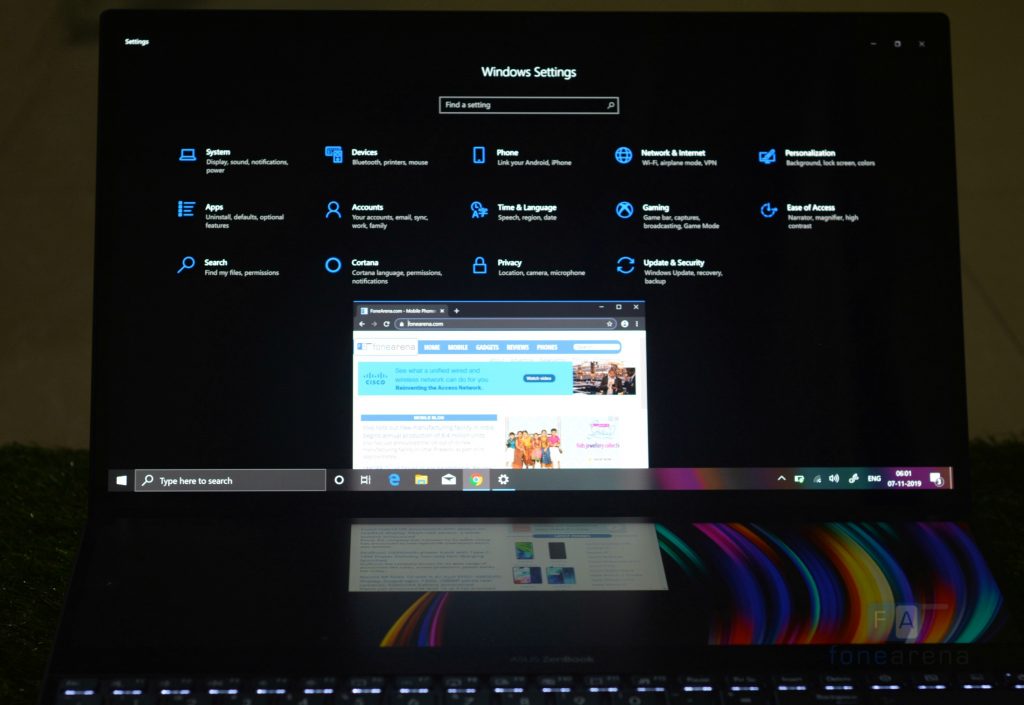
Regarding the secondary display i.e., ScreenPad Plus, it is a 14-inch 4K display with a resolution of 3840 x 1100 pixels with 178˚ wide-view technology. It is a matte screen and reduces reflection. The quality of the 4K panel is quite good and can go pretty bright too.
Multitasking is made convenient on this laptop with ScreenPad Plus and has various use cases. With the customizable secondary display, you can open multiple windows at the same time on the second screen, extend the main screen onto the secondary display, use a single window on the second screen and multiple windows on the primary screen, and more. It comes handy in video editing where you can have your entire timeline strip on the secondary screen and have the preview window and others on the primary screen. We tried the same and the experience was great with improved workflow. You can also make use of the ‘ASUS Pen’ stylus instead of the touchpad.
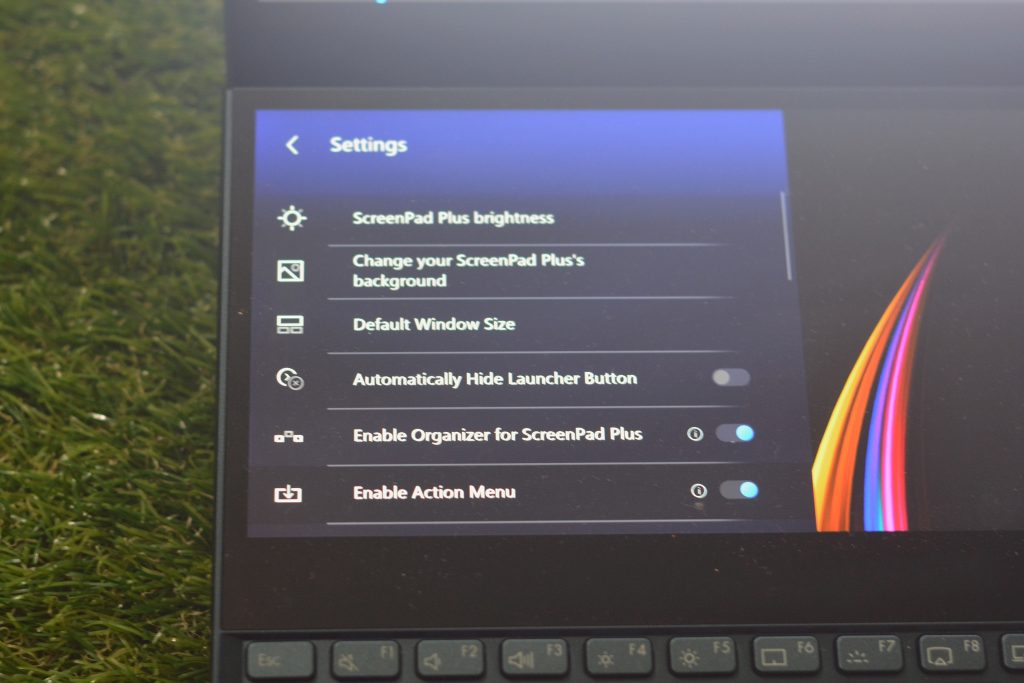
When it comes to the options available in ScreenPad Plus, you get a dedicated dock that allows you to customize the secondary screen. It includes App Switcher, ViewMax, Add, Organizer, ViewMax, Task Swap, Task Group, App Navigator, and Handwriting. Other options include adjusting the brightness, setting default window size, toggle action menu, and more. Our favorite feature is ViewMax allows you to maximize the viewing experience by dragging an app onto the icon on the main screen and ScreenPad Plus. The dual-screen implementation has been done right, but it might not interest all. It is a nifty addition for creators and for users who multitask a lot.
Performance
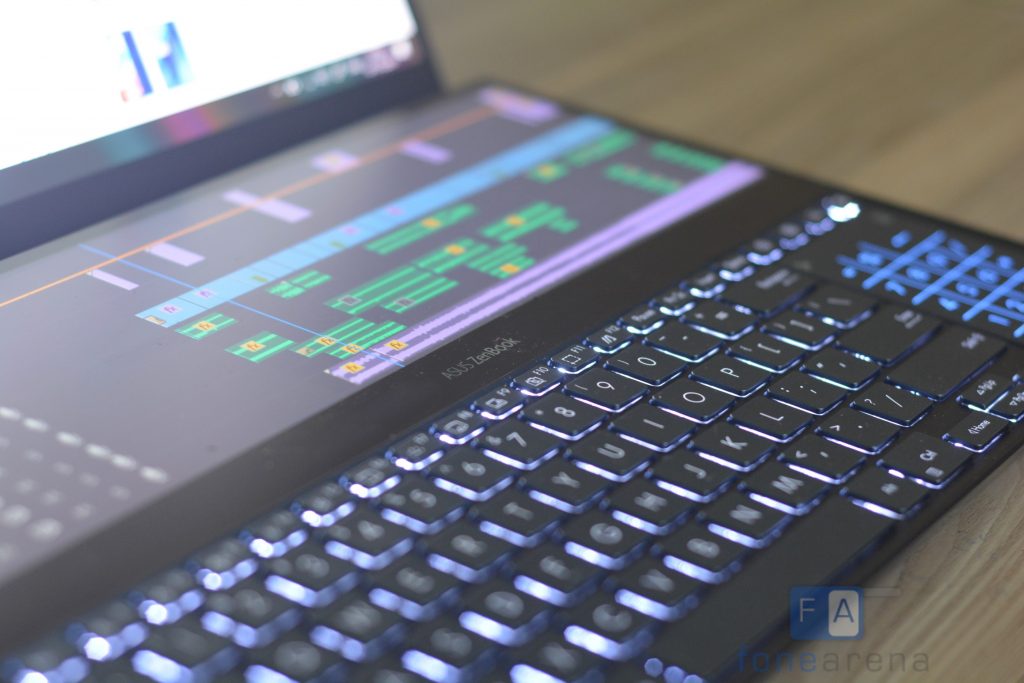
Powering this dual-screen laptop is an Octa-core Intel Core i9-9980HK processor clocked at 2.4GHz with Turbo Boost up to 5.0GHz. The graphics duty is handled by NVIDIA GeForce RTX 2060 with 6GB GDDR6 VRAM and the variant we got came with 32GB DDR4 RAM with 1TB PCIe Gen3 x4 Intel Optane Memory H10 storage.
The performance was top-notch as expected and it was able to handle intense applications with ease. Multitasking was a breeze on this laptop and it was able to handle it without any issues. The RAM management is quite good and there were no hiccups. Regarding the GPU performance, RTX 2060 handled graphics duties with ease. We tried rendering multiple videos on Premiere Pro, ran few graphic intense games, and we did not notice any lag, throttling or performance issues. So, in the performance aspect, ASUS hasn’t compromised and packed the latest hardware.
We also ran benchmarks and got a score of 2659 on Novabench, a Single-core score of 812 on Geekbench, etc. The 1TB PCIe Gen3 SSD has a read/write speed of 2178Mbps / 2377Mbps respectively. You can check out the detailed scores in the images below.
The connectivity options and ports include up to Intel Wi-Fi 6 (802.11ax), Bluetooth 5.0, 1 x Thunderbolt 3 USB Type-C with Display Port, 2 x USB 3.1 Gen 2 Type-A , 1 x HDMI 2.0, 1 x Audio combo jack, 1 x DC-in.
Battery and Keyboard
ZenBook Pro Duo packs a 71Wh 8-cell battery that charges via a massive 230W power adapter (19.5V DC, 11.8A, 230W output). ASUS claims that this laptop delivers up to 7.5 hours of battery life, but in our testing, we got around 2.5-3 hours of battery life on a single charge which is just about average.
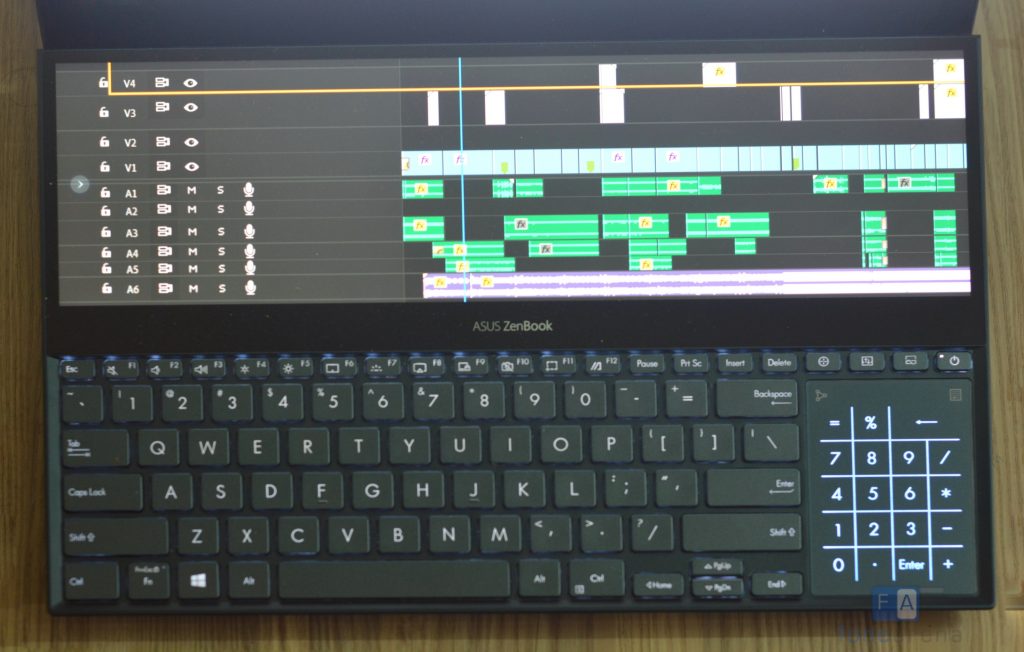
The keyboard on this laptop is a full-size backlit keyboard with 1.4mm key travel. It is responsive and key travel is quite good too. As the secondary screen covers most of the space followed by the keyboard, there is no space for palm rest by default, and this could be annoying. But you can use the bundled discrete palm rest separately for a comfortable typing experience.
Conclusion
ASUS has definitely nailed the dual-screen implementation with a bold attempt and is indeed the laptop of tomorrow which needs refinement. In our opinion, this laptop might not interest all for all and is made with creators in mind. If you can go past the cons mentioned, then it is a good recommendation for creators or power users. With the introduction of a dual-screen laptop in the market, expect more brands to come up with similar implementation.
Availability
ASUS ZenBook Pro Duo (UX581) is priced at Rs. 2,09,990 for the Intel Core i7 variant and the Core i9 variant that we tested is priced at Rs. 2,49,900 and is available on Flipkart, Amazon.in and offline in all dealer outlets, ASUS Exclusive Stores and Reliance store.
Pros
- Brilliant Displays
- Great performance
- Almost perfect implementation of dual-screen
Cons
- Bulky
- Random touch issues
- Average battery life

